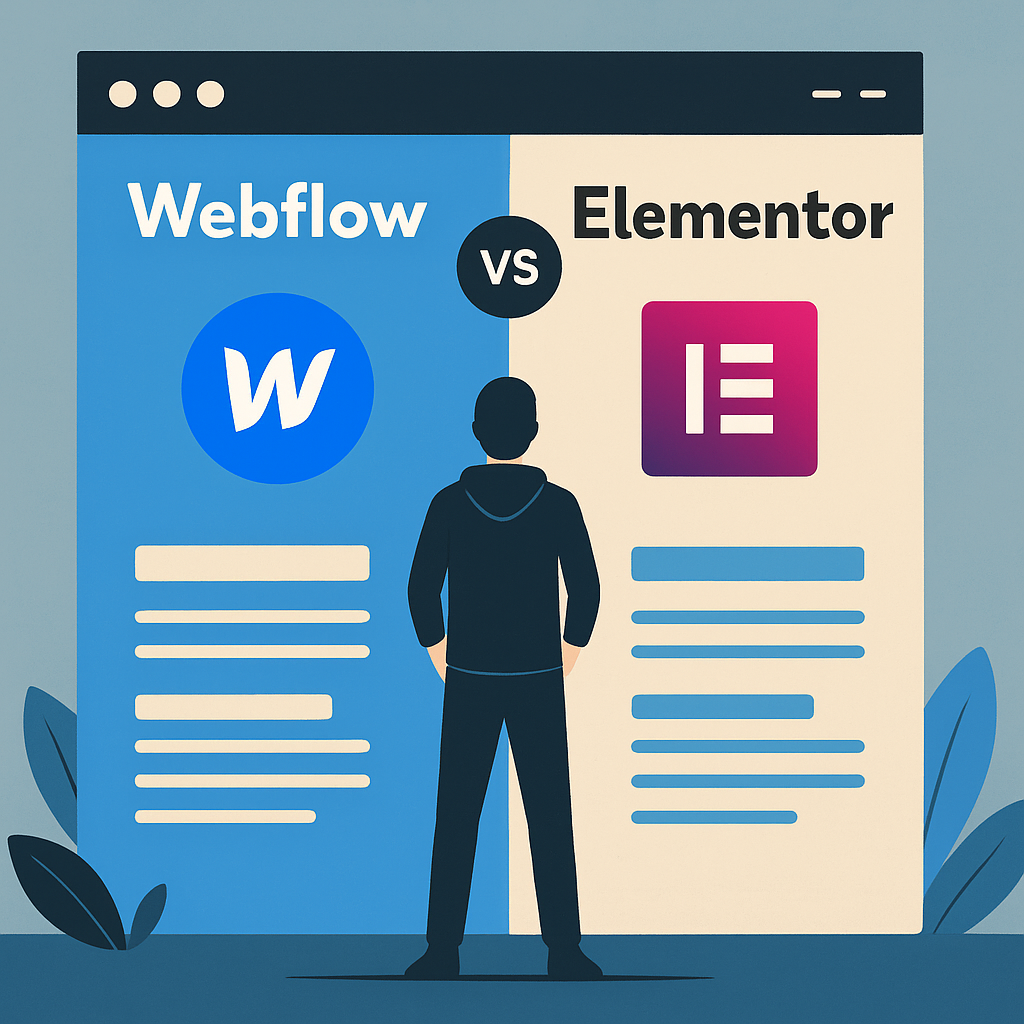
Choosing between Webflow and Elementor comes down to more than just which builder is “easier” or “cheaper.” Both can get you a good-looking site, but the way they handle design, hosting, and growth is completely different. If you’re building a personal blog, your decision process won’t be the same as someone setting up a SaaS landing page or scaling an eCommerce store.
This guide breaks down where each platform shines, what you should look out for, and why more teams are starting to consider Webflow as they grow past the limitations of WordPress builders like Elementor.
Here’s how they stack up at a glance:
Webflow is an all-in-one platform where you design, build, and host your website. You’re not stitching together multiple tools. The designer gives pixel-level control over every element, and the built-in CMS means you can manage blogs, product catalogs, or dynamic pages without relying on extra plugins.
The platform is popular with agencies, startups, and teams that want something beyond cookie-cutter templates. It also produces clean code, which matters for both site performance and SEO. If you want a site that feels fully custom without diving into heavy code, this is where Webflow stands out.
Elementor is a drag-and-drop builder that works as a plugin for WordPress. You still manage hosting, themes, and updates through WordPress, but Elementor handles the page building and design.
It’s a go-to for people already using WordPress who want more visual control without coding. The interface is beginner friendly, and it integrates easily with thousands of WordPress plugins. But because it sits on top of WordPress, you inherit all the pros and cons of that ecosystem, including plugin conflicts, performance tuning, and manual updates.
Webflow’s interface is built for people who want control over details like spacing, breakpoints, and animations. The first time you open the Designer, it can feel overwhelming. Once you learn the basics, you get freedom that most site builders don’t match. Designers and marketers love this because you can create exactly what you want without relying on developers to tweak every element.
Elementor is more beginner-friendly. If you know WordPress, you’ll pick it up quickly. The drag-and-drop builder works on top of any theme, and you can start adding sections, widgets, and templates within minutes. The tradeoff is that advanced layouts or performance optimizations often require extra plugins or custom code.
Webflow gives full control over interactions, animations, and responsive layouts without requiring extra add-ons. Complex designs like custom sliders or scroll-triggered animations are native to the platform.
Elementor can do a lot with its widgets and theme builder, but it relies heavily on plugins for advanced features. Want motion effects? Need to integrate eCommerce? You’ll often install multiple add-ons, which can impact site performance and maintenance over time.
Webflow sites are hosted on fast infrastructure, include free SSL, automatic backups, and generate clean code out of the box. We’ve broken this down in more detail in our post on Is Webflow Good for SEO?. You can control meta tags, redirects, alt text, and Open Graph settings without needing extra plugins. Core Web Vitals tend to perform better since there’s no plugin bloat.
Elementor depends on WordPress hosting and plugin setup. With the right stack, performance can be solid, but it requires more manual optimization. SEO plugins like Yoast or Rank Math are popular, but they add another layer of configuration.
When comparing costs, Webflow is often higher upfront but predictable since hosting and features are bundled. Elementor can start cheap but costs can rise as you add plugins or premium themes.
Both have large template libraries, but the approach is different:
Webflow support runs during business hours, but their University tutorials and forums are widely praised. The Webflow community also shares cloneable projects and tips, making it easy to learn by example.
Elementor has a 24/7 support option for paid users and one of the largest WordPress communities online. Between forums, YouTube tutorials, and third-party resources, you’ll find plenty of help, though answers can vary depending on plugins and hosting setups.
A lot of teams look at Webflow after outgrowing Elementor. Moving from WordPress to Webflow means rebuilding pages in Webflow’s Designer and importing content into its CMS. While it’s not a one-click migration, it’s often worth it for teams tired of managing plugin updates or chasing performance fixes.
If you’re already on WordPress and happy with your setup, Elementor makes sense. But if you’re starting fresh or planning to scale, Webflow is usually the cleaner long-term choice.
If you’re leaning toward Webflow and want help setting things up right, we build and optimize Webflow sites that load fast, look great, and are easy to manage. Sign up to see how we can help with design, migrations, or scaling your existing site.